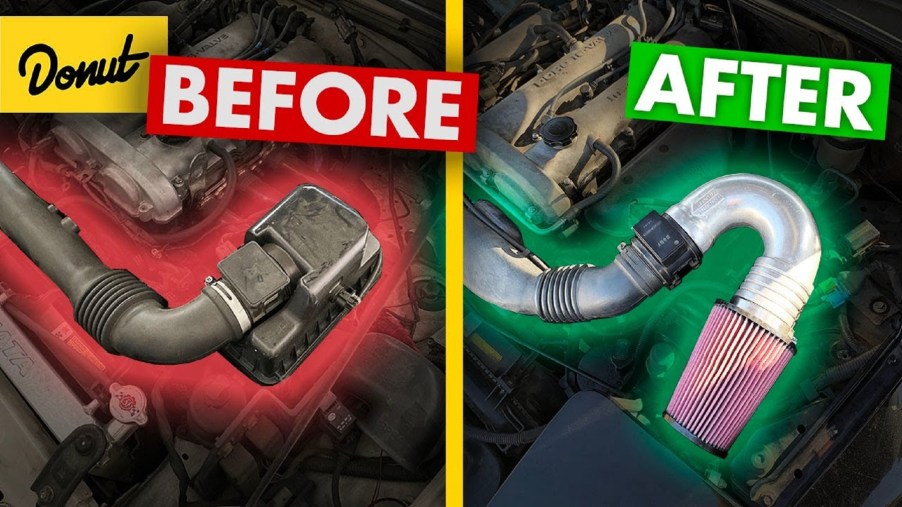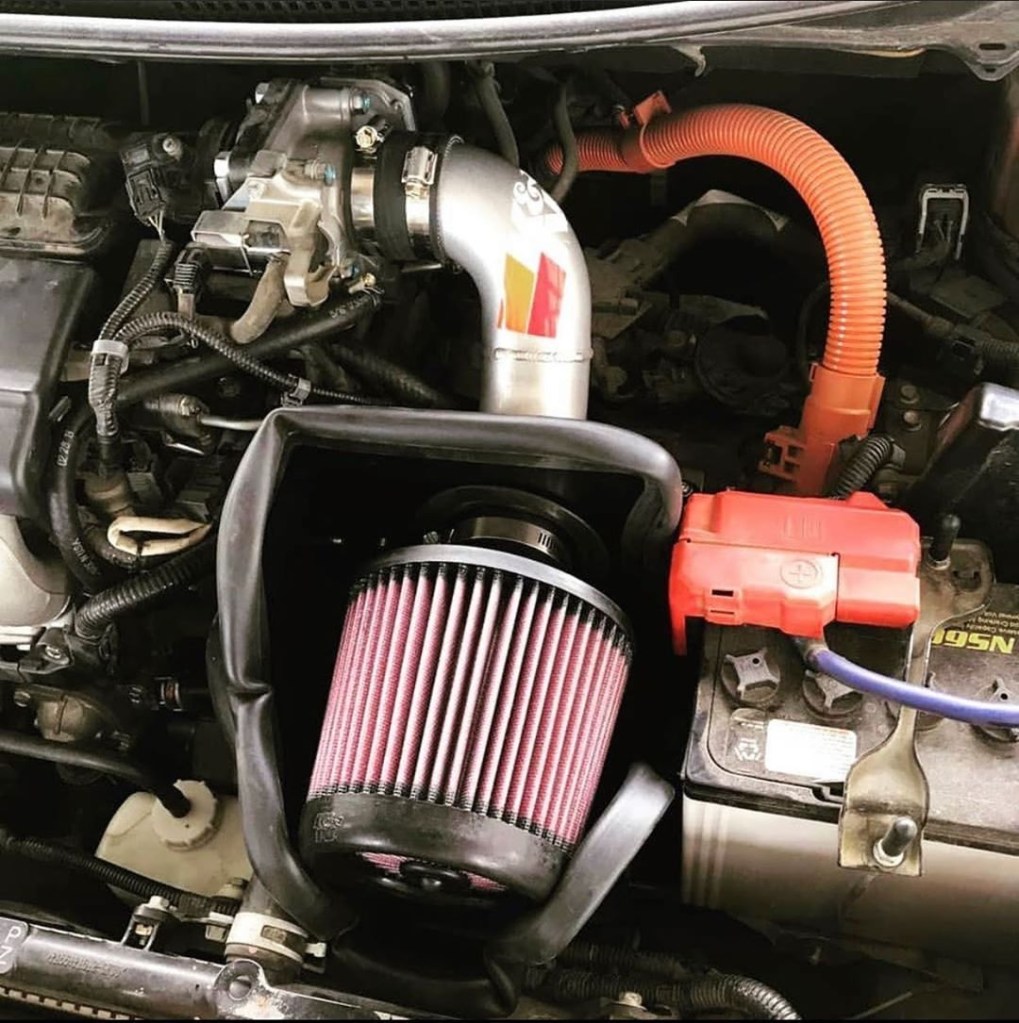
Do Cold-Air Intakes Even Do Anything?
If you want to improve a car’s handling, better tires are one of the easiest modifications you can make. But tires and upgraded suspension components can only go so far. Especially if the goal is straight-line speed, you’ll eventually have to tune the engine. A common first step is installing a cold-air intake. But does replacing your car’s standard air intake actually add any horsepower?
What is a cold-air intake supposed to do?
All internal-combustion engines need air to make power. Normally, this air gets sucked in through an air intake pipe. But because even clean air isn’t really clean, the air intake is covered with a filter, housed in a special box. The filter and box also serve as a baffle, Four Wheeler explains, which cuts down on engine noise.
However, as with the standard engine mounts, some of this refinement comes at the cost of performance. For one, the factory air intake design limits how much oxygen gets into the combustion chamber. Secondly, the filter box is typically placed fairly close to the engine itself. This means it heats up—and hot air is less dense, and contains less oxygen, Autoblog explains. In other words, the opposite of what engines, especially turbocharged and supercharged ones, prefer.

That’s where cold-air intakes come in. They’re positioned farther away from the engine, and sometimes come with a heat shield, CJ Pony Parts explains. In addition, oftentimes the cold-air intake filter is wider, with a less-restrictive material, than the OEM one. That means more airflow, which, combined with the cooler temperature, means more oxygen and more power.
At least, that’s what’s supposed to happen on paper.
Does a cold-air intake genuinely improve performance?
Donut Media wanted to find out how effective a cold-air intake was at boosting a car’s performance. So, host Zach Jobe installed one in his NA Miata, along with a Racing Beat connector. That’s actually the same kind of cold-air intake the previous owner of my NB Miata installed.
Jobe doesn’t put the Miata on a dyno after installing the cold-air intake. However, the new intake definitely makes more noise than stock, and there is a slight improvement in power. That’s consistent with the manufacturer’s claims. K&N claims that its best Miata cold-air intakes add 3-4 horsepower.
So, on its own, a cold-air intake doesn’t add much performance. However, that’s actually OK, Streetside Auto explains because it’s meant to be just one part of an entire build. That’s why manufacturers like Ford include them in their performance kits. The new, freer-flowing intakes mean the re-tuned ECUs and/or added turbos can do their jobs better.
Pricing, installation, and potential issues
Cold-air intakes aren’t particularly expensive, especially the more road-oriented ones. For example, the most expensive K&N intake listed for my Miata costs $286. And installation can usually be done within an hour or two.
However, there are a few things to keep in mind with cold-air intakes. Some replace the entire pipe that leads into the engine. This can interfere with the car’s airflow sensor, and cause fueling issues, FCP Euro explains. Additionally, some of these intakes use oiled filter elements, which can build up over the sensor over time, CarsDirect reports. Especially if the intake is positioned low, where it can more easily pick up debris. And finally, not every cold-air intake is emissions-legal in every state.
Follow more updates from MotorBiscuit on our Facebook page.


